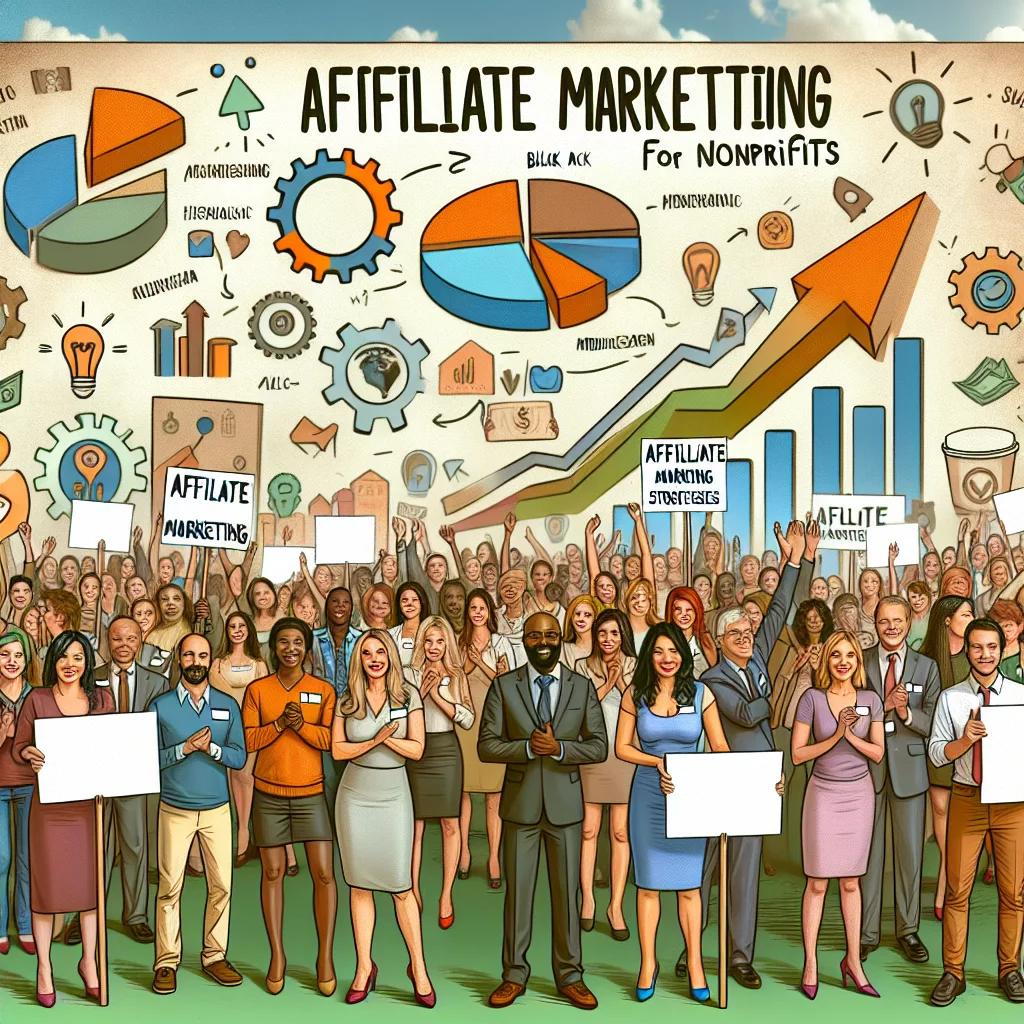Understanding Affiliate Marketing
What is Affiliate Marketing?
Let’s start with the basics! Affiliate marketing is all about connecting brands with potential customers through affiliates who promote products or services. Think of affiliates as the middle people – they help spread the word and earn a commission in return for bringing in sales. It’s a win-win situation where nonprofits can leverage these relationships to fuel their fundraising efforts.
As a nonprofit, it can sometimes be tough to raise funds. Why not utilize the resources around you? With affiliate marketing, you can engage individuals or businesses who can promote your cause by recommending products or services. This not only raises awareness for your organization but also gives supporters a tangible way to contribute through their regular shopping habits.
In my experience, affiliate marketing can feel a little daunting at first. You might think, “How do I even get started?” Well, it’s simpler than it sounds! The key is to find partners whose values align with your mission and who genuinely care about the cause you represent.
Choosing the Right Affiliate Programs
Identifying Compatible Programs
Not all affiliate programs are created equal, and that’s okay! It’s crucial to zero in on programs that resonate with your nonprofit’s mission. For me, I usually start by looking at companies or products that align with the causes we support. If your nonprofit is centered around environmental issues, consider partnering with eco-friendly brands.
Reaching out to local businesses can also be beneficial. They may be more eager to support your cause and help generate interest from their customers. Plus, when you partner with like-minded organizations, you can create powerful campaigns that amplify your message.
Don’t forget to evaluate any potential affiliate program’s credibility before jumping in. A reputable program will not just support your cause but will also provide clear communication and good commission structures. Trust me, having reliable partners makes all the difference!
Creating Engaging Marketing Content
Crafting Your Message
Once you’ve chosen your affiliate partners, it’s time to think about how to spread the word. You’ll want to create marketing content that not only informs but also engages your audience. I love using storytelling in my content to showcase how the products or services relate back to our cause. It adds a personal touch and invites readers to connect emotionally.
Visual content is also a game-changer! Don’t shy away from using eye-catching graphics, videos, or infographics that highlight the benefits of the product while tying it back to your mission. People are more likely to share engaging content, which means more exposure for your cause!
Remember to include clear calls-to-action (CTAs) in your content! Whether it’s a ‘Shop Now’ button or ‘Learn More About Our Cause,’ guiding your audience on the next steps can lead to increased conversions.
Building a Strong Community of Affiliates
Fostering Relationships
The power of affiliate marketing truly shines when you cultivate strong relationships with your affiliates. I make it a point to check in regularly, whether through newsletters or social media to keep them informed and engaged. A little appreciation goes a long way in this space!
Encouraging your affiliates to share their experiences can lead to more authentic storytelling, which resonates with their audiences. Highlighting their contributions through shout-outs or showcasing their unique campaigns is a great way to foster camaraderie.
Creating a community where affiliates feel valued and connected can also generate more enthusiasm for your cause. Consider hosting webinars or workshops focusing on how to maximize their marketing efforts, thereby investing in their growth as well as your own nonprofit’s success.
Measuring Success and Adjusting Strategies
Tracking Performance
Lastly, but definitely not least, is figuring out what works and what doesn’t. I always stress the importance of tracking your affiliates’ performance. Most affiliate programs provide analytics, so dive into those numbers to analyze engagement and conversion rates. This data is gold!
If you notice some affiliates are outperforming others, reach out! Discuss what they’re doing differently and see if those strategies can be implemented by others in your network. On the flipside, if something isn’t working, don’t be afraid to adjust your approach or even part ways with underperforming partners.
Ultimately, don’t forget to celebrate your success with your affiliates, no matter how small! This will motivate them to keep pushing for your cause, and you’ll continue to build a stronger collective effort in your fundraising campaigns.
Frequently Asked Questions
1. What is affiliate marketing in the context of nonprofits?
Affiliate marketing for nonprofits involves partnering with brands that promote products or services related to your cause. When individuals purchase through these recommendations, your nonprofit earns a commission that can support your fundraising efforts.
2. How do I choose the right affiliate programs for my nonprofit?
Look for affiliate programs that align with your mission and values. Assess their credibility, commission structure, and how their products relate to your cause, ensuring they fit naturally with your organization.
3. What content should I create to promote affiliate products?
Focus on engaging storytelling that connects your cause to the products. Use visual elements like images and videos, and always include clear calls-to-action to guide your audience.
4. How can I strengthen my relationships with affiliates?
Regular communication, such as newsletters and shout-outs on social media, can help foster relationships. Consider hosting workshops or webinars to share strategies and celebrate accomplishments together.
5. How do I measure the success of my affiliate marketing efforts?
Utilize the analytics provided by your affiliate programs to track performance, such as conversion rates. Assess which affiliates are doing well and discuss strategies for improvement with your network.
